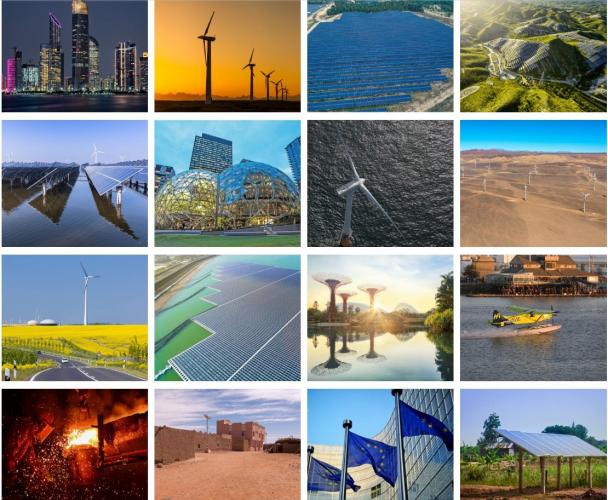
There is growing awareness of the connection between health and climate change, leading nations to invest in new plans and strategies but not many are committing resources yet to meet the coming challenges. This is the broad reading from a new report released earlier in the month by the World Health Organisation (WHO). The 2018 (for the year in which most of the data was collected) WHO Health and Climate Change Survey Report, a 32-page document, released Dec. 03 says countries are increasingly prioritising climate change and health, with half of the 101 countries surveyed having developed a national health and climate change strategy or plan. Worryingly, only about 38 per cent have finances in place to even partially implement their national strategy or plan, and fewer than 10 per cent channelling resources to implement it completely.
In India, climate change and environment degradation are likely to have a severe impact on health and take thousands of lives every year in the country in the future. The warning comes not from some non-profit or activist groups but from India’s health ministry, which says that between 2030 and 2050, climate change is expected to cause approximately 250,000 additional deaths per year, from malnutrition, malaria, diarrhoea and heat stress. In particular, Acute Respiratory Infection (ARI) tops the list of communicable diseases in the country.
India did not participate in the survey. The gap between intention and action was brought to attention by WHO’s Director General Dr.Tedros Adhanom Ghebreyesus, who said, “It is a moral imperative that countries have the resources they need to act against climate change and safeguard health now and in the future.”
In India, climate change and environment degradation are likely to have a severe impact on health and take thousands of lives every year in the country in the future. The warning comes not from some non-profit or activist groups but from India’s health ministry, which says that between 2030 and 2050, climate change is expected to cause approximately 250,000 additional deaths per year, from malnutrition, malaria, diarrhoea and heat stress.
In particular, Acute Respiratory Infection (ARI) tops the list of communicable diseases in the country. The National Health Profile for 2019 reported that almost 70 per cent of morbidity reported in communicable diseases was due to ARI. Pneumonia and ARI together accounted for almost 60 per cent of the mortality in communicable diseases in 2018, NHP 2019, 14th issue reported. This has important implications for illnesses related to air quality, which is impacted severely by climate change because of increased incidences of fires, increased ground-level ozone, which is a key component of smog, and particulate matter air pollution. Deteriorating air quality can translate to diminished lung function, increased hospital admissions and emergency department visits for asthma, and increases in premature deaths.
India also has a challenge with vector borne diseases like malaria, dengue, chikungunya, filariasis, Japanese encephalitis and leishmaniasis transmitted by fleas, ticks, or mosquitoes. Climate change enhances the transmission season and expands the geographical distribution of vector-borne diseases, as warmer temperature and humidity favours the breeding of insect vectors and also alters the geographic distribution of existing vectors. This could mean a dramatic rise in the disease burden. Malaria is already one of the most important causes of direct or indirect infant, child, and adult mortality in India. The WHO South East Asia Regional Office estimates 15 million cases and 20,000 deaths due to malaria every year.
India spends about 1.5 per cent of GDP on health currently, which is way below its neighbours like Maldives, Thailand, Bhutan, Sri Lanka and Indonesia. There has been no substantial change in the expenditure on health for a decade. A nation struggling to cope with its current disease burden thus is less equipped to handle spikes that are likely because of climate change.
In another report, the Climate Institute reported the challenge faced by India with recent analysis that has focused more on humidity than solely temperature, the so-called ‘wet bulb’ temperature (WBT). WBT is a measure of the lowest temperature at which the body can continue to cool itself via sweating.
“A temperature of 50°Celsius with 40 per cent humidity is equivalent to a WBT of 36°C with 100 percent humidity, the threshold at which the body can no longer regulate temperature and even those sitting in the shade may die within six hours. Research published in 2017 found that, under scenarios in which carbon emissions were left unabated, four percent of the world’s inhabitants would suffer these un-survivable heatwaves, including in northern Indian cities with populations exceeding two million,” the Institute said earlier in the year.
India spends about 1.5 per cent of GDP on health currently, which is way below its neighbours like Maldives, Thailand, Bhutan, Sri Lanka and Indonesia. There has been no substantial change in the expenditure on health for a decade. A nation struggling to cope with its current disease burden thus is less equipped to handle spikes that are likely because of climate change. While the understanding of the linkages is there, and while data provides further confirmation of the coming burden, action at the policy-making level remains limited.
More change is coming on the ground as can be seen from the gathering of 40 “change makers” who are meeting in Delhi on the weekend of Dec. 21-22 to discuss climate change and the risks it poses for the nation. Interestingly, issues of freedom of choice (on food, religion etc.) are also coming up at the summit, indicating that climate change is likely to build pressure and create an agenda for action from the bottom up, with important triggers coming from the youth demanding change.
(Vidya Krishnamurthi is a programme associate with Foundation of The Billion Press and the co-author of a book published by the Planning Commission on the Indian Railways)


